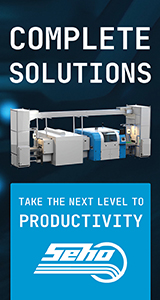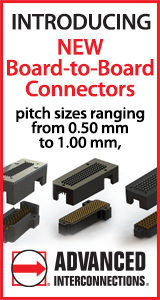|

|
|
| Ask the Experts | |||||||
|
|||||||
|
September 5, 2017 - Updated October 29, 2007 - Originally Posted Component Shift During ReflowWhat factors cause component shift during and after reflow? Peter Gong |
|||||||
| Expert Panel Responses | |||||||
|
Several factors can cause component shifting during the reflow process. When dealing solely with the SMT process, contributing factors to consider are: Part to Pad Geometry: A mismatch in part to pad geometry will cause a part to pull towards the closest thermal mass. For instance, in a design using an SOL component, if close to half the leads on one side of the SOL are intended to be soldered to a common copper plane then the SOL can pull or move towards the larger copper plane due to thermal mass. Some designers like this flooding of copper approach especially in RF applications for added grounding and noise reduction. However this usually causes the individual pads for the flooded half of the SOL to be mask defined. Mask defined pads are often asymmetrical depending on how the copper flooding comes into individual pads thereby adding to geometry differences. In contrast, on a normal thermally isolated pad, mask relief is preferred since it provides a type of a moat around individual pads, helping to contain the solder and prevent bridging. Misshaped & Bent Leads: Although not likely depending on the mass and angle of a lead bend, the bend can also cause part movement. For Example if an SOL has a normal seating plane on one half of the component and the other half has bent leads causing just to toes to touch the paste then the part can pull or even lift towards the side with a normal seating plane due to increased thermal mass. Asymmetrical Component Heat Sinks: If a component body has an asymmetrical heat sink the part may pull towards the greatest thermal mass. This is true especially if the heat sink is common to the legs on one side of the component. In this case the solder is also being wicked upward, along the bottom of the heat sinked component body and legs. Component Oxidation: Oxidized components especially light ones can tend to swim or float on the solder rather than evenly wet. This is amplified in smaller, lighter components. Stencil Print Accuracy and Coverage: If a solder print image is misregistered i.e., not fully on component pads then the component may pull in the direction of the greatest thermal mass. This can easily cause tombstoning if misalignment is severe enough. Stencil Design / Solder Paste Deposition: The volume of solder paste i.e., ratio of paste to the size of component intended to be soldered. If there is too much paste then a component can swim or float on the solder during the reflow process. This is especially true of smaller, lighter components. Component manufactures can provide recommended apertures and stencil thickness however it's not unusual to have to modify these based on design constraints and other areas of the PWB. A good reference for stencil design is IPC-7525, Stencil Design Guidelines. This provides pattern and ratio calculations suitable for most components. Custom components need to be addressed on an individual basis. In addition most stencil suppliers are experienced with what usually works and what doesn't. They can make suggestions based on the over all Gerber data. As a rule unless all desired differences between the component and stencil layers have been incorporated in the Gerber, then most data will require some sort of adjustments to support suitable solder deposition. Placement Accuracy: Several types of misplacement can cause part movement during reflow. Some causes are parts not being fully placed in the solder paste but rather on top of, causing the part to swim or float. This can be due to incorrect programmed part height, misadjusted board support, sticking nozzles etc. Inspection can show a perfectly centered part but if it's not in the solder all bets are off. If a board is too high then a part can deform paste when placed and or slide off its centroid. The bottom line is that if a part is offset or skewed meaning not symmetrically centered in the solder paste so that solder is evenly distributed around the terminations then a part may move during reflow. Thermal Profile: Thermal ramp and blower speed in convection ovens can cause component movement. Typically a convection oven profile will have lower blower speeds or zone pressures at the beginning of a thermal ramp and gradually increase as the board transitions though the oven. The reason for this is that parts are more susceptible to movement in solder paste and can even be dislodged if blower speed or zone pressure is too high. Once liquidus occurs components are held in place by surface tension.
Sr. Manufacturing Engineer TransCore Amtech Technology Center Mr. Culpepper has over 20 years in electronic manufacturing, primarily focusing on PWA assembly.
Components may shift during reflow due their ability to float on the molten solder. Some components have many pads or land areas, such as BGA components and those components used to realign themselves due to the surface tension of the molten solder. With lead-free materials this ability to realign themselves is not as good and many times the components will remain where they are placed, which is a good reason to make sure the placement equipment places them exactly where they are supposed to be in the middle of the pad or land areas. You would typically see these or observe the change after reflow, due to all of this happening as the solder paste is molten within the length of the oven. Components floating on the surface of the molten solder are also dependent upon the size of the pad or termination on the component. Butt joint leaded component will not align themselves as easily components which have large leads, such as gull wing components or chip components due to the fact that the cross sectional surface area of the lead or contacts is the parameters which makes this all happen. If more is needed please don't hesitate to question further.
Vice President, Technical Director EPTAC Corporation At EPTAC Corporation, Mr. Lambert oversees content of course offerings, IPC Certification programs and provides customers with expert consultation in electronics manufacturing, including RoHS/WEEE and lead free issues. Leo is also the IPC General Chairman for the Assembly/Joining Process Committee.
There are number of factors that can cause components to shift during reflow:
Manager, Process Technology BTU International Mr. Dimock is the manager of Process Technology at BTU International. His extensive experience in thermal processing includes positions at Corning, GE, and Sylvania. He has authored numerous articles on lead free processing and process control, taught classes at SMTAI, and participated in the IPC Reflow Oven Process Control Standard committee.
The fundamental reason for component shift is solder surface tension. All things being equal, the molten solder will try to reduce surface energy. It does this by wetting and spreading on high energy surfaces (substrate and component terminations cleaned by the flux) and reducing its own surface area. Since the component can move, it gets drawn into alignment and capillary gaps get closed down which is why we generally see self-alignment. If component wetting is uneven at different sites on the component (different thermal demand on different parts of the components, different levels of solderability, different volumes of solder paste) or placement accuracy is very poor, then the surface energy may be reduced for only some of the areas to be soldered and this may move the component away from correct alignment. For example, array packages may "float" and rotate so not all terminations are on pads and others are on the wrong pads. Tombstoning is the equivalent effect with a 2 (or 3) termination leaded device. There are cases where components may be physically moved before the solder melts. This is caused by explosive outgassing from flux and other organics on the PCB. It may also happen if the tack force exerted by the printed paste is too low (it may have dried before or after component placement) and simple handling causes the component to move.
Marketing 360-Biz Douglass Dixon is the Chief Marketing Officer for 360 BC Group, a marketing agency with offices throughout the US. 360 BC specializes in consulting and implementing successful marketing programs that utilize the latest in marketing, sales and technology strategies. As an electronics veteran, Dixon has worked in the industry for over 30 years for companies like Henkel, Universal Instruments, Camelot Systems, and Raytheon. Dixon's electronics industry experience includes a broad skill set that includes engineering, field service, applications, product management and marketing communications expertise.
Too rapid a rise in temperature can cause the fluxes to boil off too fast causing the components to move prior to reflow. Machine vibration can cause the components to move during reflow.
Regional Sales Manager OK International Inc. Ed Zamborsky is a Regional Sales & Technical Support Manager for Thermaltronics, located in New York. His position requires frequent customer visits throughout North America and the Caribbean and his position encompasses not only sales but the role of trainer and master applications engineer for all of Thermaltronics products. His expertise includes such specialties as hand soldering, convection and conduction reflow techniques, array rework, fluid dispensing equipment, and fume extraction. Ed has authored many articles and has presented many papers on topics such as; Low Volume SMT Assembly, Solder Fume Extraction, SMT Rework, BGA Rework, Lead-Free Hand Soldering, High Thermal Demand Hand Soldering, Lead Free Visual Inspection and Lead Free Array Rework.
Component shift back onto its pads is a result of surface tension in the molten joint. Shift OFF the pads is either gas turbulence and excessive gas velocity or some mechanical interference [curtain wall possibly] coming into contact with the components before the joints have solidified.
CEO ATEK llc Allen Duck is a 20-year Electronics Industry veteran with Global experience in multiple fields of technology and management. He started A-Tek in 2006 to provide a sales and service channel for international equipment companies wishing to offer value based solutions to USA companies.
|
|||||||
| Submit A Comment | |||||||
|
Comments are reviewed prior to posting. You must include your full name to have your comments posted. We will not post your email address. |
|
Free Newsletter Subscription
Circuitnet is built for professionals who bear the responsibility of looking ahead, imagining the future, and preparing for it. Insert Your Email Address |
|

|







